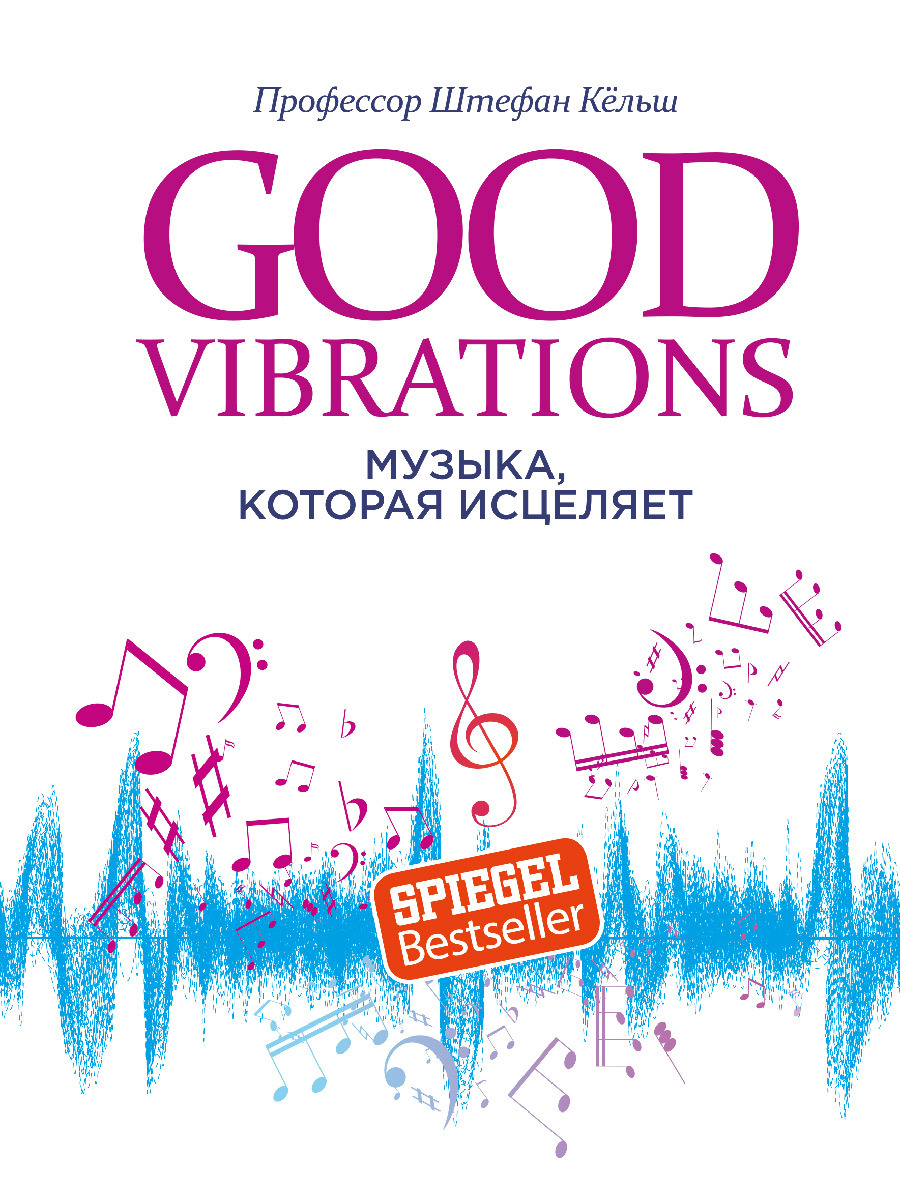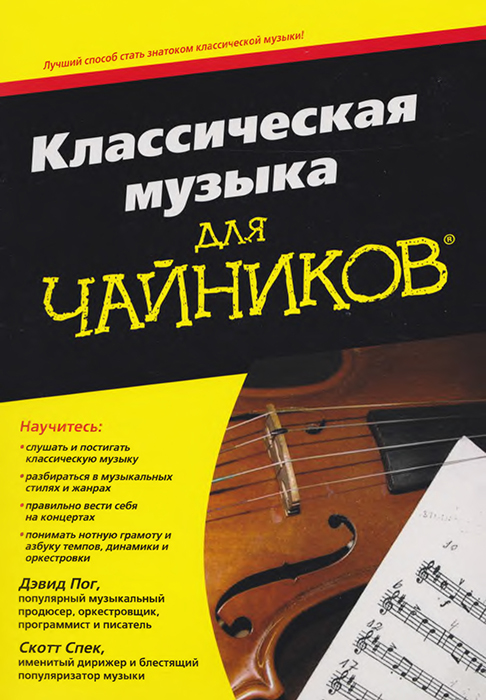Читать книгу - "Good Vibrations. Музыка, которая исцеляет - Штефан Кёльш"
Аннотация к книге "Good Vibrations. Музыка, которая исцеляет - Штефан Кёльш", которую можно читать онлайн бесплатно без регистрации
Эта книга рассказывает о влиянии музыки на физическое и ментальное здоровье человека. Профессор Кёльш утверждает, что музыка лежит в основе человеческой сущности и что музыкальность присуща каждому человеку. Опираясь на новейшие научные исследования, автор рассказывает о влиянии музыки на гормональную, иммунную, вегетативную нервную систему; о том, что происходит в мозге при прослушивании музыки; о влиянии музыки на состояние здоровья и о ее способности лечить болезни и бороться с зависимостями. Вы найдете здесь много практических советов, упражнений и даже списки для прослушивания. Не обязательно читать всю книгу целиком. Вы можете прочесть только нужный вам раздел или знакомиться с частями в любой последовательности. Для всех, кто любит музыку и желает укрепить здоровье.
28
Koelsch, S., Fritz, T., Schulze, K., Alsop, D., & Schlaug, G. (2005): Adults and children processing music: an fMRI study, Neuroimage, 25 (4), S. 1068–1076.
29
Perani, D., Saccuman, M. C., Scifo, P., Spada, D., Andreolli, G., Rovelli, R., ... & Koelsch, S. (2010): Functional specializations for music processing in the human newborn brain, Proceedings of the National Academy of Sciences, 107 (10), S. 4758–4763.
30
Carr, K. W., White-Schwoch, T., Tierney, A. T., Strait, D. L., & Kraus, N. (2014): Beat synchronization predicts neural speech encoding and reading readiness in preschoolers, Proceedings of the National Academy of Sciences, 111 (40), S. 14559–14564.
31
Jentschke, S., & Koelsch, S. (2009): Musical training modulates the development of syntax processing in children, Neuroimage, 47(2), S. 735–744.
32
Clément, S., Planchou, C., Béland, R., Motte, J., & Samson, S. (2015): Singing abilities in children with Specific Language Impairment (SLI), Frontiers in Psychology, 6, S. 420.
33
Bhide, A., Power, A., & Goswami, U. (2013): A rhythmic musical intervention for poor readers: A comparison of efficacy witha letter-based intervention, Mind, Brain, and Education, 7 (2), S. 113–123.
34
Flaugnacco, E., Lopez, L., Terribili, C., Montico, M., Zoia, S., & Schön, D. (2015): Music training increases phonological awareness and reading skills in developmental dyslexia: a randomized control trial, PLoS One, 10 (9), e0138715.
35
Schellenberg, E. G. (2006): Long-term positive associations between music lessons and IQ, Journal of Educational Psychology, 98 (2), S. 457; Schellenberg, E. G., Corrigall, K. A., Dys, S. P., & Malti, T. (2015): Group music training and children’s prosocial skills, PLoS One, 10 (10), e0141449.
36
Pantev, C., Oostenveld, R., Engelien, A., Ross, B., Roberts, L. E., & Hoke, M. (1998): Increased auditory cortical representation in musicians, Nature, 392 (6678), S. 811.
37
Wong, P. C., Skoe, E., Russo, N. M., Dees, T., & Kraus, N. (2007): Musical experience shapes human brainstem encoding of linguistic pitch patterns, Nature Neuroscience, 10 (4), S. 420.
38
Kraus, N., & Strait, D. L. (2015): Emergence of biological markers of musicianship with school-based music instruction, Annals of the New York Academy of Sciences, 1337 (1), S. 163–169.
39
Moreno, S., Marques, C., Santos, A., Santos, M., Castro, S. L., & Besson, M. (2008): Musical training influences linguistic abilities in 8-year-old children: more evidence for brain plasticity, Cerebral Cortex, 19 (3), S. 712–723.
40
Gaser, C., & Schlaug, G. (2003): Brain structures differ between musicians and non-musicians, Journal of Neuroscience, 23 (27), S. 9240–9245.
41
Draganski, B., Gaser, C., Busch, V., Schuierer, G., Bogdahn, U., & May, A. (2004): Neuroplasticity: changes in grey matter induced by training, Nature, 427 (6972), S. 311.
42
Boyke, J., Driemeyer, J., Gaser, C., Büchel, C., & May, A. (2008): Training-induced brain structure changes in the elderly, Journal of Neuroscience, 28 (28), S. 7031–7035.
43
Driemeyer, J., Boyke, J., Gaser, C., Büchel, C., & May, A. (2008): Changes in gray matter induced by learning-revisited, PloS One, 3 (7), e2669.
44
Jacobs, B., Schall, M., Prather, M., Kapler, E., Driscoll, L., Baca, S., ... & Treml, M. (2001): Regional dendritic and spine variation in human cerebral cortex: a quantitative golgi study, Cerebral Cortex, 11 (6), S. 558–571.
45
Bengtsson, S. L., Nagy, Z., Skare, S., Forsman, L., Forssberg, H., & Ullén, F. (2005): Extensive piano practicing has regionally specific effects on white matter development, Nature Neuroscience, 8 (9), S. 1148.
46
Schlaug, G., Jäncke, L., Huang, Y., Staiger, J. F., & Steinmetz, H. (1995): Increased corpus callosum size in musicians, Neuropsychologia, 33 (8), S. 1047–1055.
47
Hyde, K. L., Lerch, J., Norton, A., Forgeard, M., Winner, E., Evans, A. C., & Schlaug, G. (2009): Musical training shapes structural brain development, Journal of Neuroscience, 29 (10), S. 3019–3025.
48
Ericsson, K. A., Krampe, R. T., & Tesch-Römer, C. (1993): The role of deliberate practice in the acquisition of expert performance, Psychological Review, 100 (3), S. 363
49
Kölsch, S. (2001): Der soziale Umgang mit Fähigkeit: die geschlossene Gesellschaft und ihre Freunde, Dareschta.
50
Kleim, J. A., Hogg, T. M., VandenBerg, P. M., Cooper, N. R., Bruneau, R., & Remple, M. (2004): Cortical synaptogenesis and motor map reorganization occur during late, but not early, phase of motor skill learning, Journal of Neuroscience, 24 (3), S. 628–633.
51
Klimecki, O. M., Leiberg, S., Lamm, C., & Singer, T. (2012): Functional neural plasticity and associated changes in positive affect after compassion training, Cerebral Cortex, 23 (7), S. 1552–1561.
52
Danner, D. D., Snowdon, D. A., & Friesen, W. V. (2001): Positive emotions in early life and longevity: findings from the nun study, Journal of Personality and Social Psychology, 80 (5), S. 804.
53
Gene Weingarten in der Washington Post vom 8. April 2007.
54
Sven Oliver Müller (2014): Das Publikum macht die Musik. Musikleben in Berlin, London und Wien im 19. Jahrhundert, Göttingen, Vandenhoeck & Ruprecht.
55
Schulreich, S., Heussen, Y. G., Gerhardt, H., Mohr, P. N., Binkofski, F. C., Koelsch, S., & Heekeren, H. R. (2014): Music-evoked incidental happiness modulates probability weighting during risky lottery choices, Frontiers in Psychology, 4, S. 981.
56
Bhattacharya, J., & Lindsen, J. P. (2016): Music for a brighter world: Brightness judgment bias by musical emotion, PLoS One, 11 (2), e0148959.
57
Taruffi, L., Pehrs, C., Skouras, S., & Koelsch, S. (2017): Effects of sad and happy music on mind-wandering and the default mode network, Scientific Reports, 7 (1), S. 14396.
Прочитали книгу? Предлагаем вам поделится своим впечатлением! Ваш отзыв будет полезен читателям, которые еще только собираются познакомиться с произведением.
Оставить комментарий
-
 Вера Попова27 октябрь 01:40
Любовь у всех своя-разная,но всегда это слово ассоциируется с радостью,нежностью и счастьем!!! Всем добра!Автору СПАСИБО за добрую историю!
Любовь приходит в сентябре - Ника Крылатая
Вера Попова27 октябрь 01:40
Любовь у всех своя-разная,но всегда это слово ассоциируется с радостью,нежностью и счастьем!!! Всем добра!Автору СПАСИБО за добрую историю!
Любовь приходит в сентябре - Ника Крылатая
-
 Вера Попова10 октябрь 15:04
Захватывает,понравилось, позитивно, рекомендую!Спасибо автору за хорошую историю!
Подарочек - Салма Кальк
Вера Попова10 октябрь 15:04
Захватывает,понравилось, позитивно, рекомендую!Спасибо автору за хорошую историю!
Подарочек - Салма Кальк
-
 Лиза04 октябрь 09:48
Роман просто супер давайте продолжение пожалуйста прочитаю обязательно Плакала я только когда Полина искала собаку Димы барса ♥️ Пожалуйста умаляю давайте еще !))
По осколкам твоего сердца - Анна Джейн
Лиза04 октябрь 09:48
Роман просто супер давайте продолжение пожалуйста прочитаю обязательно Плакала я только когда Полина искала собаку Димы барса ♥️ Пожалуйста умаляю давайте еще !))
По осколкам твоего сердца - Анна Джейн
-
 yokoo18 сентябрь 09:09
это прекрасный дарк роман!^^ очень нравится
#НенавистьЛюбовь. Книга вторая - Анна Джейн
yokoo18 сентябрь 09:09
это прекрасный дарк роман!^^ очень нравится
#НенавистьЛюбовь. Книга вторая - Анна Джейн





